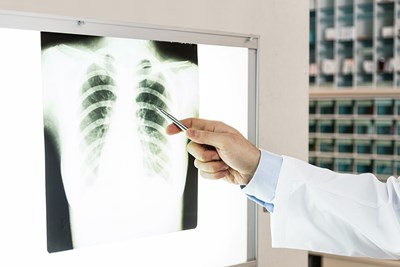Reactive airway disease (RAD) can be a confusing illness, especially since most experts maintain that it isn’t necessarily it’s own disease. Generally, RAD is a short-term diagnosis for a much bigger problem—namely asthma. Here is a look at 10 important terms relating to RAD.
- Bronchi: The bronchi are the main pathways that deliver fresh air into the lungs. They branch into two parts in either lung like an upside down tree trunk. This is the main anatomical structure from which so many respiratory issues (like asthma or RAD) stem.
- Asthma: Asthma is also a respiratory dysfunction in which the bronchi respond more strongly than normal to certain stimuli. The airways will get larger, smaller, and develop excessive amounts of mucus, which makes it more difficult to breathe.
- Reactive airways dysfunction syndrome (RADS): This disease generally revolves around a single event in which the patient is exposed to large amounts of irritants, like cigarette smoke, fumes, or other irritants that initiate an asthma-like response.
- Airway hyperreactivity: This is another medical term that can also get rolled up in the reactive airway disease blanket. Unlike RADS, however, it is not in fact it’s own disease. It is instead a clinical term used to define hyperreactive airways in a variety of illnesses and situations.
- Allergist: It can be confusing to find the right doctor for specialized illnesses like RAD. An allergist is a doctor who receives training in asthma, allergies, and allergic asthma. A pulmonologist, or lung and respiratory specialist, may also be necessary.
- Triggers: In both asthma and RAD, certain things can induce an episode. These triggers are what set off a period of respiratory discomfort. It is important to know individual triggers, like dust, smoke, stress, mold, and pet dander in order to learn how to avoid, control, or prepare for contact with them.
- Wheezing: Wheezing is one of the main symptoms of RAD. It is characterized as a high-pitched whistling noise that comes from the lungs—mostly during exhalation, but occasionally during inhalation. There are dozens of potential causes of wheezing, but RAD and asthma are two of the top reasons.
- RAD Episode: When certain triggers hit an affected person, it can cause a chain reaction leading to a full blown RAD episode. The longer the episode goes on, the more difficult it becomes to manage.
- Retractions: Among several other signals indicative of a RAD episode, retractions can be one of the first warning signs. Abnormal breathing can be an obvious sign. Every time the person inhales, they are sucking in air, rather than following a normal breathing pattern. The inhalations are so extreme you can see the outline of the ribs, or retraction.
- Bronchodilators: Bronchodilators (often found in the form of an inhaler) are used to keep the bronchi expanded. This type of medication can help prevent an episode by allowing the airways to open and letting the affected patient finally be able to breathe better.



